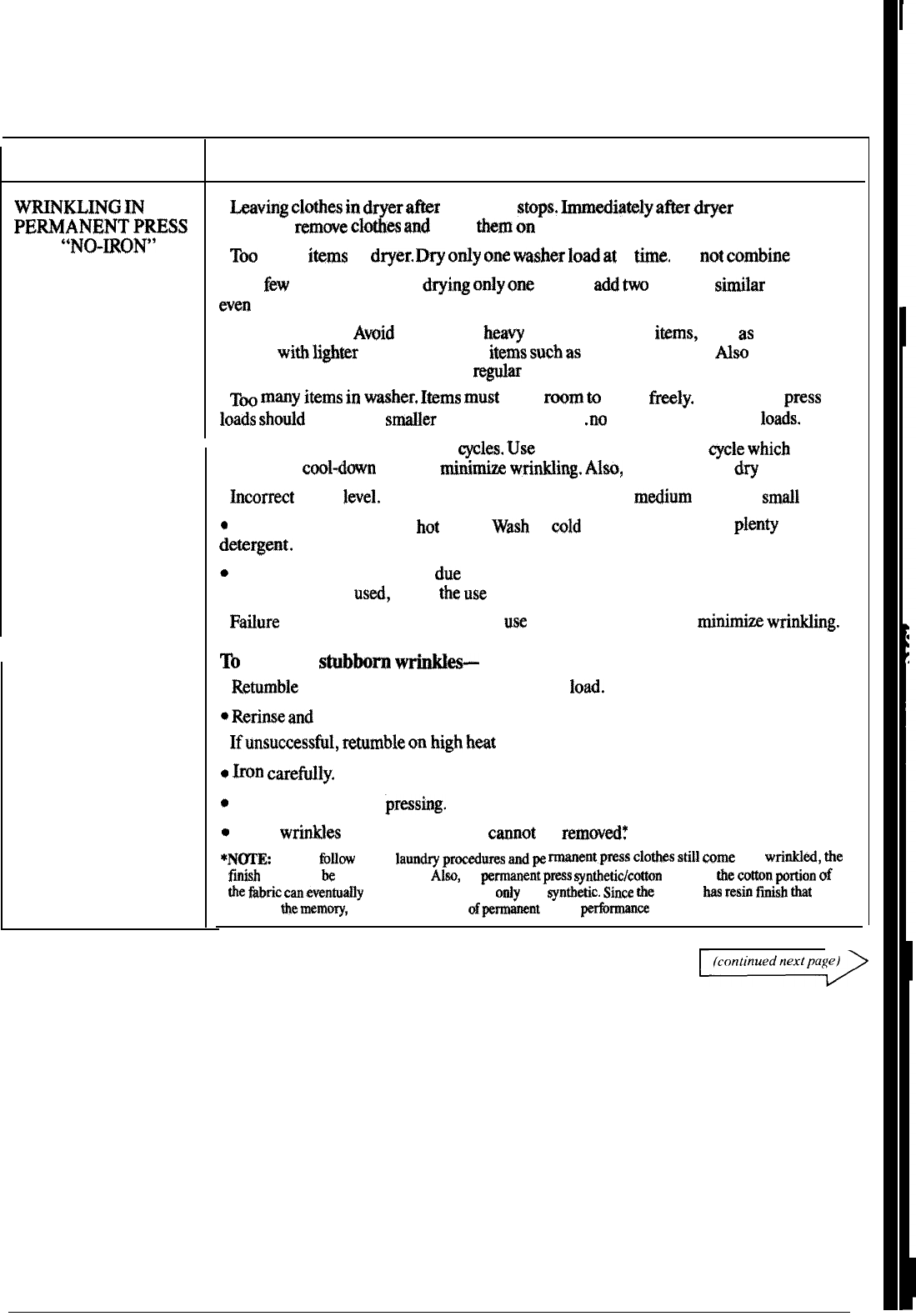
.
PROBLEM
WNKLING
IN
PERMANENTPWSS
AND
“NO-~ON”
ITEMS
POSSIBLE CAUSE AND REMEDY
●
~ving
clothes
in
dryer
ah
tumbling
stops.
=ia$ely
after
dryer
stops
tumbling,
rernme
clothm
and
place
them
on
hangers.
●
Too
many
items
in
dryer.
Dry
ody
one
washer
load
af
a
time.
Do
not
combine
loads.
●
Too
few
items in dryer. If
drying
only
one
article,
add
two
or more
sidar
articles,
even
if dry, to insure proper tumbling.
●
Improper loads.
Awid
laundering
heavy
permanent press
items,
such
as
work
clothes,
with
lighter
permanent press
items
such
as
shirts or blouses. Mso do not wash
or dry permanent press items with
re@ar
laundry.
●
~
m~y
items
in
*er,
l*ms
m~t
have
r~m
to
move
fr%ly.
Permanent
pWSS
loads
shodd always be
sdler
than regular loads..
.no
more than
medium
loads,
●
Use of incorrect wash and dry
cycles.
Use
permanent press wash
qcle
which
provides a cooldown rinse to
mini~
wrirdding.
Also,
use automatic
dry
cycle.
●
kcorrect
water
level.
Use large level for medium load;
medium
level for
sdl
load.
*
Repeated washing in too
hot
water.
Wmh
in
cold
or warm
water with
plenty
of
detirgent.
*
Accumulation of lime scale
due
to use of carbonate detergents. If a non-phosphate
detergent must be
used,
avoid
the
use
of a carbonate-built detergent.
●
FaUure
to use fabric softener. Proper
use
of fabric softener will
rninimiw
writdding.
~
remove
shbbm
w*es–
.
Retumble
on automatic dry setting with small
load.
Q
Rerinse
and
dry on automatic dry setting.
●
If~nsuccessfil, ~t~mble
on
high
h-t
for 10-~ minutes and hang immediately.
0
~n
CM@~~y.
*
Send to cleaners
for
‘pressirtg.
w
Some wrin~es may remain which
cannot
be
removed?
*N~E:
If you
fillow
good
laun~
proedures
W
pe
~ntpmss
cloties
still
come
out
writid,
tie
finish
may not
%
good quality.
Also,
in
~rrnaoenfpress
syntietic/cWon
blends,
the
cotton
~rtion
&
tie
hbric
csneventudly
wear away leaving
ordy
the
syntietic.
Since
the
cotton
Ms
resti
Msh
tit
imparts
tiememo~,
a loss or decrease of~manent press
pefimce
will result.
23


















